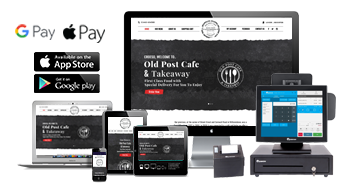
Providing excellent customer service is crucial for restaurants and handling difficult customers can be challenging. This guide will provide restaurant owners and managers with strategies and best practices for handling various types of difficult customers effectively.
Introduction
Customer satisfaction is essential for success in the restaurant industry. According to studies, 93% of customers are more likely to make repeat purchases from companies that offer great customer service.
However, even restaurants with exceptional food and service will inevitably encounter difficult customers from time to time. Learning to properly handle customer conflicts in a professional manner is critical for building a positive reputation and maintaining customer loyalty. This guide will cover techniques for:
Identifying and understanding different types of difficult customers
Training staff to communicate effectively and stay calm under pressure
Creating a positive dining experience to minimize issues
Resolving complaints and disputes
Maintaining professionalism during confrontations
Using feedback to make improvements
By implementing the strategies in this guide, restaurant owners and managers can enhance their customer service practices and turn dissatisfied diners into happy patrons.
Understanding Difficult Restaurant Customers
The first step to handle difficult customers is identifying the various types of problematic diners:
The Impatient Customer
Impatient customers have little tolerance for wait times or delays in service. They may express annoyance or frustration if kept waiting for a table, food, or check longer than expected.
The Indecisive Customer
Customers have trouble making menu selections in a timely manner. They may vacillate between options, change their minds, or ask excessive questions.
The Rude or Aggressive Customer
Rude customers make unreasonable demands, use vulgar language, or have confrontational attitudes. In extreme cases, customers may become verbally or physically aggressive with staff.
The Entitled Customer
Entitled customers make unreasonable demands and have unrealistic expectations of service. They may become easily offended or outraged if these expectations aren’t met.
Understanding the psychology behind difficult behaviors can help managers empathize with frustrated diners. The bottom line is unhappy customers want solutions, not excuses. Providing prompt, attentive service and clear communication can help prevent many issues from escalating.
Dealing with difficult customers training
Dealing with problematic customers requires skills that must be developed through dedicated training. Here are some best practices for customer service training:
Hold regular workshops – Don’t just train staff once. Refresh key concepts through weekly or monthly workshops.
Cover policies thoroughly – Ensure employees know approved procedures for issuing refunds, discounts, etc.
Use example scenarios – Role-play exercises with common difficult customer archetypes are highly effective. Trade roles.
Teach de-escalation tactics – Provide techniques like listening, using calming body language, and avoiding confrontational remarks.
Discuss stress management – Helping staff remain cool under fire results in more professional interactions. Cover breathing, focus, and composure.
Share success stories – Discuss examples of stellar conflict resolution. Have employees share their experiences.
Review recorded calls – Listen to phone interactions and provide constructive feedback on improving approach and empathy.
Handle in the moment – Pull employees aside as situations happen to coach them through better ways to respond.
Recognize good work – Praise staff who handle tense exchanges particularly well to reinforce training.
Hold refresher courses – Follow up initial training with regular quick reviews of the core concepts.
With practice and encouragement, restaurant staff can gain the skills to turn angry, demanding customers into happy regulars. Customer service excellence is not an innate skill but rather one built through dedication and commitment to continuous improvement.
How to deal with difficult customers on the phone
The phone presents unique challenges for managing dissatisfied customers compared to in-person interactions. When dealing with an irate caller, these tips can help staff maintain composure and guide conversations in a positive direction:
Emphasize listening skills – Allow angry callers to fully vent their frustrations without interruption. Use empathetic phrases like “I understand why you are upset” and “I hear your concern.”
Use a calming, quiet tone – Speaking softly forces upset customers to stop yelling in order to hear you. Lowering your voice can defuse tense situations.
Take breathing pauses – If customers won’t let you get a word in, stay silent and take some deep breaths. This models calm behavior.
Highlight next steps – Once you grasp the issue, explain what actions you will take to try to resolve it. Providing clear next steps reassures the customer.
Avoid defensive language – Don’t blame processes or other staff. Take ownership of the issue. “I’m sorry this happened” is better than “the kitchen made a mistake.”
Watch your hold time – If you must place angry callers on hold, ask permission first and minimize the duration. Provide status updates.
Offer options – Suggest multiple solutions if possible based on policies. This gives upset customers a sense of control.
Follow up – Promise to call back with updates at a certain time. Make sure to follow through. Reaffirm your commitment to fixing issues.
Request feedback – Ask how you could have better handled the call. This shows customers you want their input to improve.
With ongoing training on empathy, conflict resolution, and stress management, staff can gain confidence handling even the angriest callers. Customer service and phone etiquette should be core competencies for those in customer-facing roles.
Preparing Your Staff
Well-trained staff is the key to minimizing conflicts and resolving issues with difficult customers. Employees should be coached on proper etiquette, de-escalation techniques, and staying calm under pressure.
Customer Service Training
Role-playing exercises allow staff to practice appropriate responses to challenging scenarios. Rotate team members into customer and employee roles.
Practice active listening, and workshops will help staff members better comprehend customers’ issues and offer satisfactory answers.
Conflict de-escalation training gives employees techniques for soothing annoyed customers and guiding interactions in a positive direction.
Setting Expectations
Provide clear guidelines for professional conduct, proper tones of voice, body language, and facial expressions. Empower employees to do whatever is necessary to make situations right within reason, without needing management approval.
Encourage teamwork. Let staff know it is okay to tag in a coworker if they need fresh perspective on a difficult customer.
Creating a Positive Dining Experience
While excellent service won’t prevent all problems, it can reduce the likelihood of unhappy customers. Here are some front-of-house strategies:
Foster a welcoming atmosphere with warm decor, prompt seating, and sincere greetings. First impressions matter.
Ensure adequate staffing levels to minimize wait times and respond swiftly to requests.
Simplify menu offerings and layouts. This makes ordering easier and improves order accuracy.
Manage reservations appropriately to reduce walk-in wait times. Call ahead when tables will not be ready on time.
Train staff on dietary choices like gluten-free, vegetarian/vegan, and food allergies. This avoids mistakes and embarrassments.
Obtain feedback through surveys, comment cards, and online reviews. Monitor and promptly address any emerging service issues.
Handling Complaints
Despite best efforts, customer complaints are inevitable in the restaurant business. Having a clear system for handling grievances leads to better outcomes.
Complaint Resolution Process
Designate an on-duty customer service representative. They should be skilled in conflict resolution.
Listen carefully to fully understand the customer’s perspective. Repeat back details to show you comprehend.
Apologize sincerely for the issue, even if the customer is at fault. Their perception is their reality.
Remain polite and professional, no matter how angry the customer becomes. Never argue.
When possible, offer a few alternative solutions like free dessert, discounts on future visits, or complimentary valet service.
Follow up afterward via phone, email, or mail to thank guests for voicing their concerns and invite them to return.
Food and Service Issues
For food mistakes, offer to redo the dish, make a different menu selection, or pack it to-go with apology. For slow service, apologize and explain challenges like staffing or operational issues. Offer drinks, discounts, or desserts.
For reservations errors, apologize for the oversight. If no tables are available, offer a free drink at the bar or discount/gift card for their next visit.
For dietary restriction mixups, profusely apologize for the error, remake the dish if possible, and consider comping the meal. Follow up to reaffirm your commitment to doing better.
Compensation
Depending on the severity of issues, reasonable compensation like discounts, vouchers, or complimentary gifts may be warranted. Set clear policies on what managers can offer without owner approval.
How to handle difficult customer in restaurant
When facing an angry customer in a restaurant, it’s important to remain cool, actively listen, and focus on finding a resolution. Here’s how I would approach the situation:
Upon noticing a customer is upset, I would walk up to the table promptly and ask “Excuse me, I sense something is wrong. How can I help make this right?” This shows concern.
I would let the customer vent fully without interrupting. I’d nod, make eye contact and say things like “I understand your frustration” to show I’m listening closely.
If the issue is fixable on the spot, like a wrong food order, I would apologize sincerely and immediately offer a solution such as remaking the dish or taking it off the check.
For problems I cannot instantly solve, I would apologize and assure the customer I will get to the bottom of what happened. I’d ask questions to understand what went wrong.
I would thank the customer for bringing the issue to my attention and for their patience. I would explain next steps, like needing to speak with a manager or following up after investigating further.
I would speak calmly the entire time, never argue or get defensive. My focus would be on de-escalating through empathy, listening carefully, and finding a fair solution.
Afterwards, I would follow up with the customer if warranted, and learn from the experience to improve how I handle upset diners in the future.
The key is addressing problems promptly, avoiding confrontation, and making guests feel heard and valued. This transforms annoyed customers into a loyal one. With practice and preparation, restaurant staff can gain confidence handling heated situations.
Maintaining Professionalism
Remaining calm and level-headed is imperative when dealing with confrontational customers.
Take a deep breath before responding. This prevents you from reacting hastily in anger. Count to five in your head if needed.
Speak in a calm, quiet voice. This models appropriate behavior and often defuses tense situations.
Never insult, threaten or touch customers even if they engage in such behavior themselves.
Involve a manager if the situation escalates beyond your control or a customer makes highly unreasonable demands.
Avoid public confrontations. Don’t draw more attention to an escalating situation. Seek a private area to discuss matters if needed.
If a customer incident gets out of hand, it may be appropriate to ask them to leave for the safety and comfort of other guests and staff. Have procedures for contacting security or law enforcement ready if required.
Recovering Online
Increasingly, unhappy customers share complaints on social networks and in online reviews. Prompt, thoughtful responses can mitigate damage to your reputation.
Monitor online review sites closely for complaints.
Respond professionally with an apology and request for more details.
Offer to make amends, if appropriate, once you have more information.
Rectify any business processes that contributed to the negative experience.
Follow up with the customer directly with a phone call or email if warranted.
Consider publicly posting your response and resolution if it reflects your business positively.
Training for Consistency
Ongoing training ensures staff maintain excellent service skills, especially for handling challenges.
Conduct regular customer service training refreshers on policies, best practices, and conflict resolution.
Solicit employee feedback on what training has helped improve their skills and what they still struggle with.
Share positive examples of how team members resolved difficult scenarios. Mentor new hires using these success stories.
Evaluate and coach employees if you notice service skills slipping. Always recognize and praise good work too.
Encouraging Feedback
The best customer service teams actively solicit input from patrons to identify problems before they escalate into crises.
Provide comment cards and invite customers to share their experiences. Follow up promptly on concerns.
Monitor online reviews across various sites. Look for emerging trends and recurring issues.
Survey customers about service levels and request suggestions for improvements.
Make it easy for guests to provide feedback in the moment to managers on duty.
Thank guests graciously when they bring issues to your attention, even if done rudely. Their insight gives you an opportunity to improve.
Handling difficult customers presents an ongoing challenge for restaurant owners and managers. However, mastering customer service skills ultimately pays off through improved loyalty, word-of-mouth, and profits. Here are some key concluding takeaways:
Recap of Key Takeaways
Approach all customer issues with empathy and listening actively. Seek first to understand before trying to be understood.
Train staff thoroughly on etiquette, de-escalation tactics, and stress management. Role-playing builds competence and confidence.
Set reasonable expectations about wait times, reservations, and custom orders. Communicate delays promptly and offer alternatives.
Resolve complaints quickly at the lowest level possible, ideally by the front-line staff most familiar with patrons.
Document disputes thoroughly, including remedies offered. Follow up afterward to show customers you care.
Maintain composure always, even when customers get upset or abusive. Take the high road.
Learn from mistakes and make process improvements to avoid repeated issues. Solicit feedback.
The Benefits of Great Service
While turning an irate customer into a happy one requires effort, the long-term benefits make it worthwhile:
Increased customer retention: Satisfied complainants are more loyal than those who never complained at all.
Positive word-of-mouth: Delighted diners refer friends and rave on social media. This drives new business.
Reduced staff turnover: Serving pleasant patrons boosts job satisfaction and employee retention.
Higher sales: Return customers spend more and upgrade orders compared to new patrons.
Enhanced reputation: Skillful complaint handling improves your brand image in the community.
Strive for Continuous Improvement
Rather than view difficult customers solely as a nuisance, leverage these challenges to improve:
Use complaints to spot weak points and make systemic fixes that benefit all patrons. Encourage staff at all levels to suggest better ways to handle disputes.
Keep conflict resolution skills sharp through ongoing training and practice. Set goals for measured improvement in customer centricity and reduce known pain points.
Delivering amazing customer experiences consistently, even when faced with impatient, rude or dissatisfied restaurant patrons, is crucial for success in this competitive industry. With commitment to communication, empathy and progress, restaurants can turn any customer into a customer for life.
In Summary
Handling difficult customers represents a significant challenge for restaurants, but also a valuable opportunity to sharpen customer service skills and retain patron loyalty. With the techniques in this guide, owners and managers can turn disgruntled diners into devoted regulars and build a reputation for excellence. Delivering amazing experiences consistently, remain calm under fire, and turning failures into learning opportunities are hallmarks of a customer-centric restaurant poised for lasting success.
Additional Resources
For further reading, here are some helpful articles on handling problematic restaurant patrons:
Interview Question: How Do You Deal With a Difficult Customer
Strategies for Effective Communication – Working in the Food Service Industry








